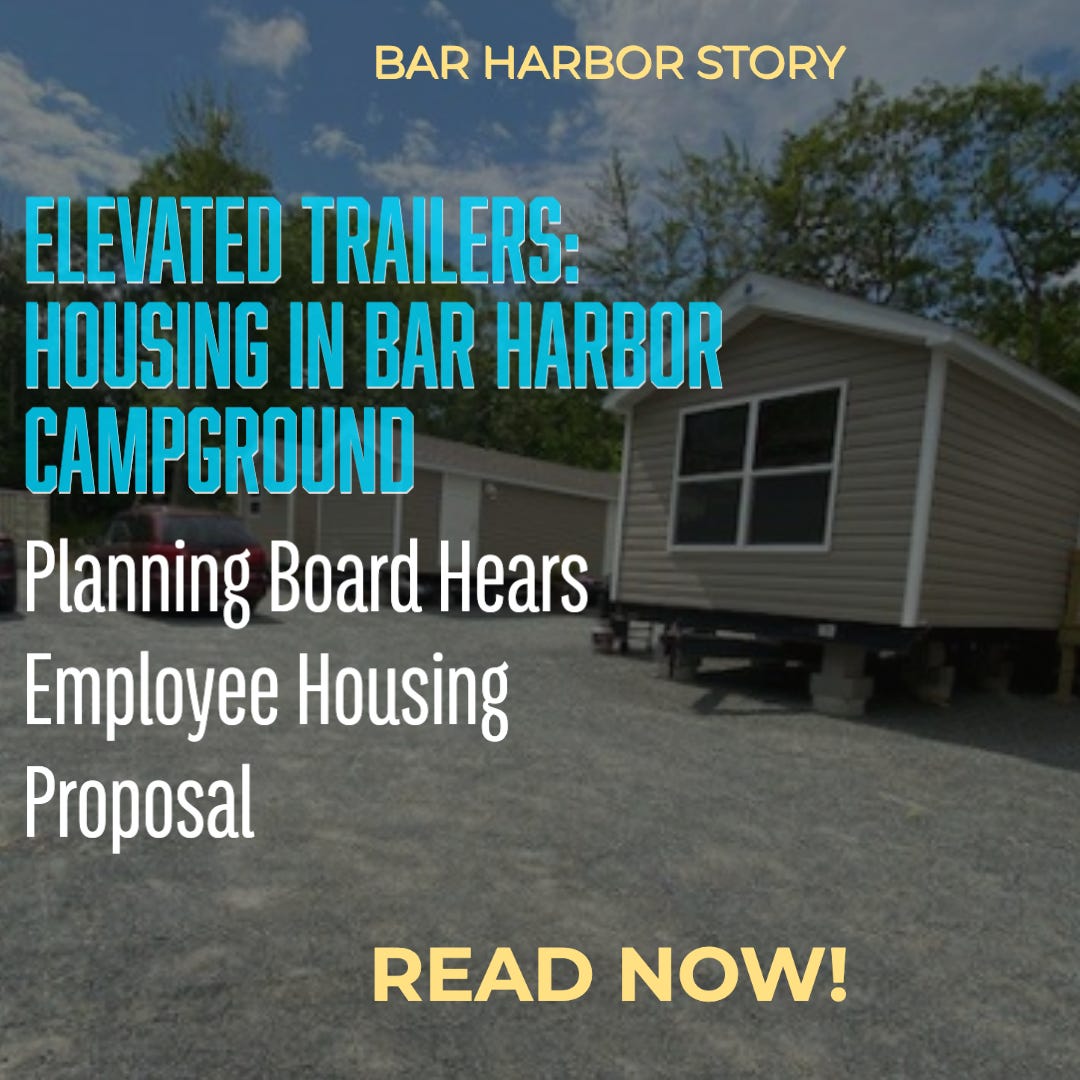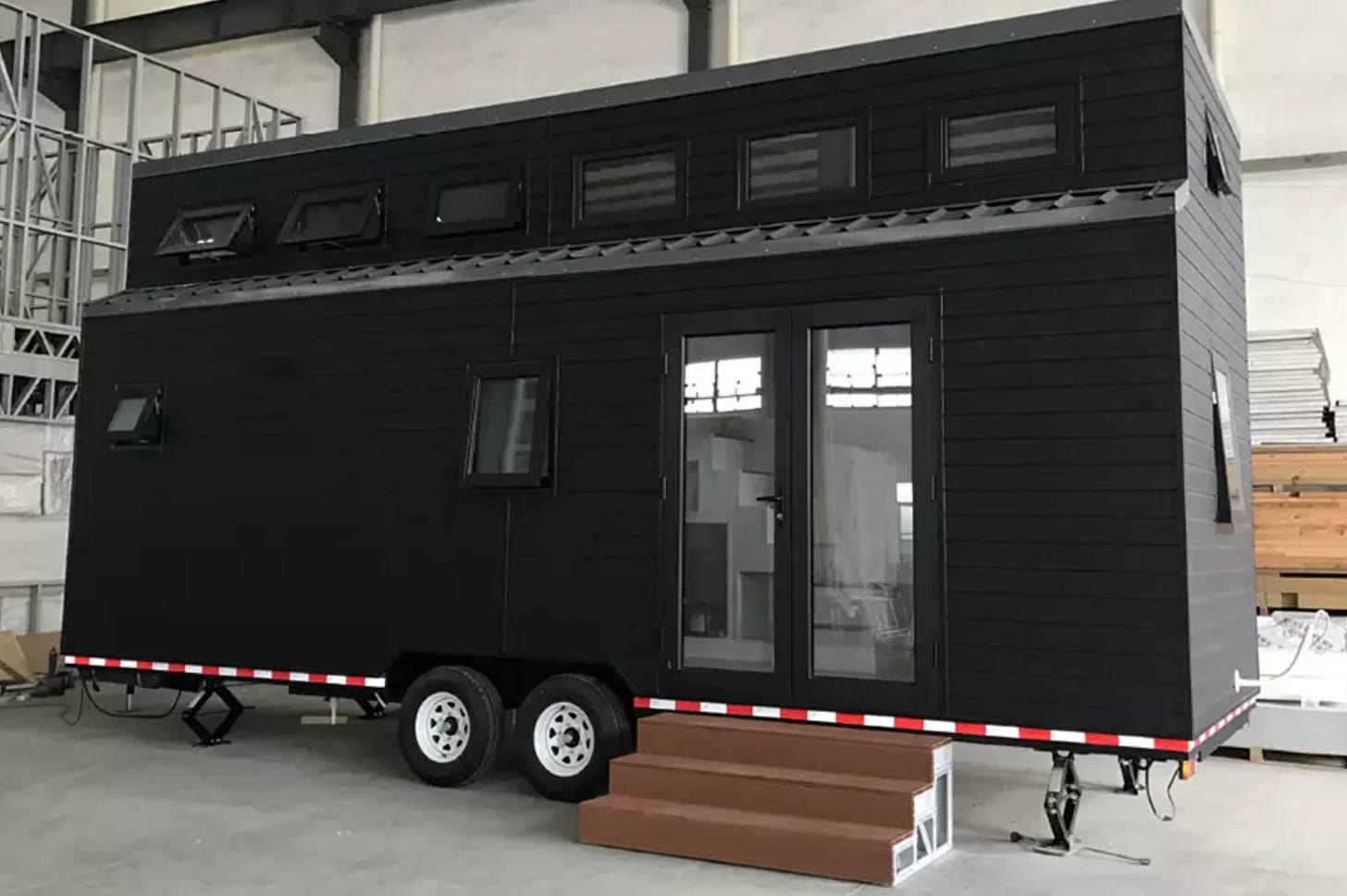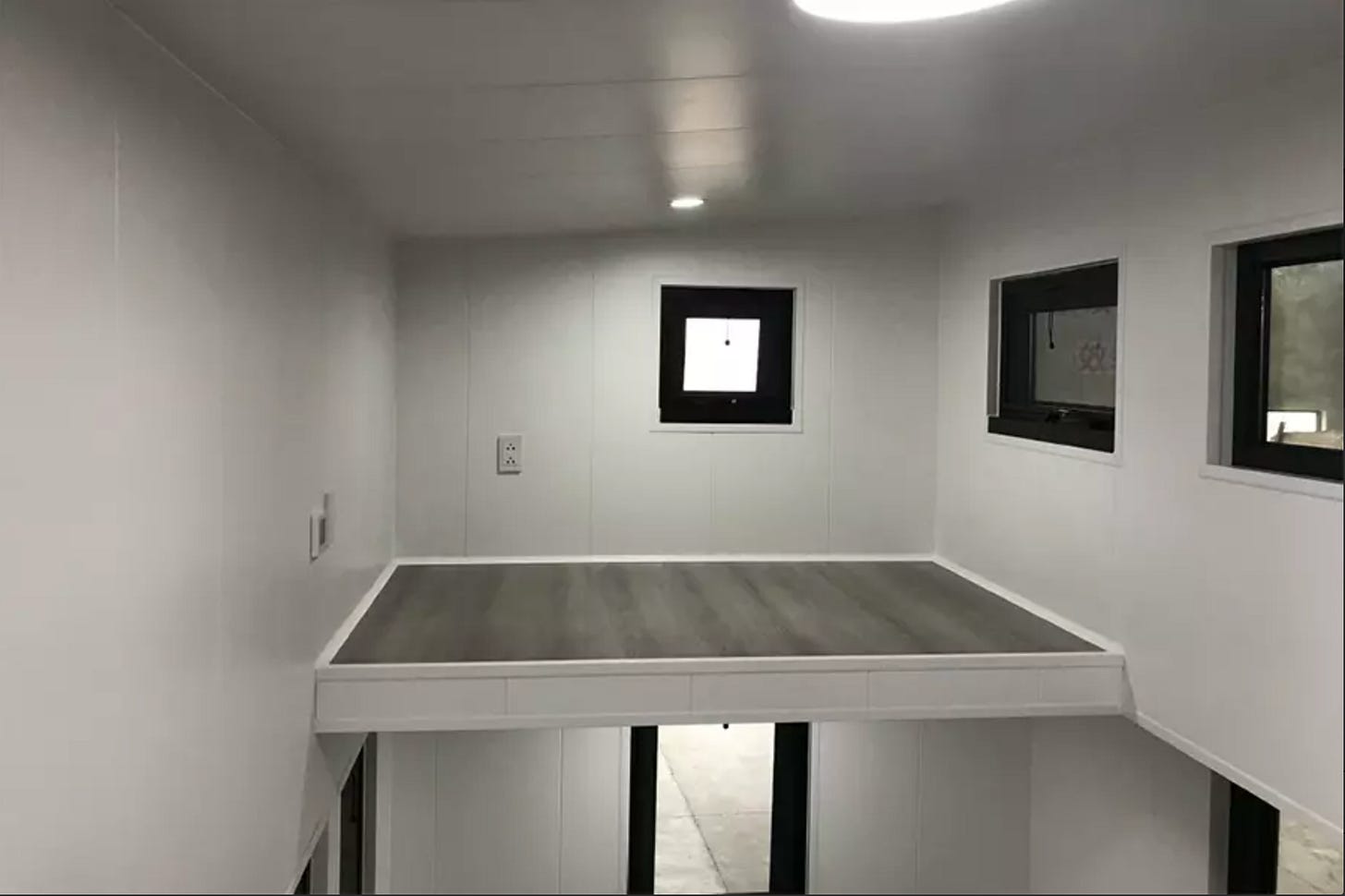Elevated Trailers: Housing in Bar Harbor
Planning Board Hears Campground Employee Housing Proposal
BAR HARBOR—Employee housing has taken a slightly different twist in Bar Harbor as the KOA Terramor Campground moves through the Bar Harbor Planning Board process to reconfigure its employee living spaces.
The KOA Terramor Employee Campsite reconfiguration would take the current employee area at 1453 State Highway 102 and involves:
1. Remodeling three existing trailers,
2. Adding two new trailers,
3. One 2-unit trailer,
4. One employee mess hall trailer,
5. One laundry trailer
6. One laundry building.
The application includes 14 employee parking spaces. All changes would be in a location that was originally approved for a wellness tent. The company also wants to add a new septic system and “convert approximately 26,694 square feet of existing employee area to reinforced turf.”
Chip Haskell represented KOA Terramor at the meeting and per the board’s request at an earlier meeting detailed the septic issues. The Planning Board unanimously voted that the plan was complete and it began the public hearing and continued the public hearing and compliance review to November 2.
Fire Chief Matthew Bartlett required that a condition of approval would be that the campground “must meet NFPA 1192 Standard for Recreational Vehicle.” This, according to the staff report, ‘is some disagreement between the fire chief and the applicant about the applicable section(s) of NFPA, further discussion between the two parties is necessary.” NFPA stands for National Fire Protection Association. Board member Earl Brechlin wondered about the resolution of the two different codes.
Staff also recommended more details about the materials used in the reinforced turf as well as a copy of its agreement with the landscaping contractor.
At the board’s September 7 meeting, the application spawned some discussion about if trailers are permanent structures in a campground or are not permanent structures. The trailers have wheels underneath the structure and there are RV pedestals at each of the Terramor sites. In the application they are called employee campsites and employee trailers. The board looked at the definition of what is a recreational vehicle. Recreational vehicles require vin numbers and wheels on the ground.
BIGGER HOUSING QUESTIONS
Folding the discussion into the housing discussion wasn’t what happened at the Planning Board meeting this week, but recent research shows a difficulty in finding and building starter homes throughout the country as well as in Bar Harbor and Mount Desert Island.
According to a March 21 report by Tim Ellis for Redfin, a national real estate company,
“The average monthly asking rent in the U.S. increased 15% year over year to a record high of $1,901 in February, the largest annual jump since at least February 2020 (Redfin’s rental data goes back through February 2019). Meanwhile, the national median monthly mortgage payment for homebuyers climbed 31% year over year to $1,716, also the biggest increase in Redfin’s records.”
Similarly, Redfin’s comparison of Maine home prices from August 2021 to August 2022 show an 11.5% increase. The actual amount of homes sold decreased by 8.9% and the actual number of homes for sale decreased by 13.9%.
The median sale price for Maine was $349,00 and 2,075 were sold in that timeframe. The median days that homes were on the market was 24 days.
Redfin said that for Bar Harbor, “The average sale price of a home in Bar Harbor was $653K last month, down 75.4% since last year. The average sale price per square foot in Bar Harbor is $320, down 40.8% since last year.”
An article in the Texas Tribune by Lucy Tompkins speaks of some of the pros and cons of mobile homes, which aren’t quite the same as what’s happening at Terramor because of the wheels and more movable nature of the campground’s units.
“As the populations and economies of Texas cities have grown dramatically over the past several decades, gentrification and rising housing costs have pushed out lower-income residents. And residents of mobile home parks — which offer affordable housing for millions of Texans — are particularly vulnerable to displacement.
“Manufactured homes, the term for mobile homes built since federal standards went into effect in 1976, are the largest source of unsubsidized affordable housing in the country. In Texas, around 2 million people, or 7.4% of the state’s population, live in manufactured homes.
“Mobile home parks give low-income families a chance at homeownership, but with a catch: They typically rent the land beneath their homes. If a landlord decides to sell or redevelop the property, people have no claim to the land they live on.”
The question becomes: How does a town with an already cumbersome land use ordinance deal with a rapidly changing world of housing?
Tompkins quotes Esther Sullivan who teaches sociology at the University of Colorado Denver and wrote Manufactured Insecurity, about the closures of mobile home parks in Texas and Florida. Between 2002 and 2011 Sullivan found 119 closures just in Houston and Harris County, Texas.
“As urban areas expand, the land where manufactured home communities sit becomes more lucrative to develop, so those communities are displaced to the ever further outer reaches” of cities, Sullivan told Tompkins.
Interestingly, after the 1950s, Americans began to move away from rural spaces with cheap land and go toward cities where there was more employment. Then cities increasingly passed zoning ordinances and rules that made building more difficult. Housing costs increased. Renting became more necessary. In a September 25 Wall Street Journal article, Kondra Putzier writes,
“Land values in Manhattan barely increased between the 1880s and 1970s after adjusting for inflation, according to calculations by Jason Barr, an economist at Rutgers University-Newark. But between 1977 and 2019, they grew at an average annual rate of about 13%.
“Most economists say municipalities need to relax zoning rules and other restrictions to bring down land inflation and build more housing. But these changes are often unpopular with homeowners, who benefit from rising land values and make up around 65% of U.S. households. Adding more housing also often requires costly investments in roads and other infrastructure.”
RVS AND HOMES ON WHEELS
Manufactured homes on wheels or concrete blocks, tiny houses and portable prefab homes on wheels, dorm RVs or just RVs are becoming alternative housing sources across the country. Springfield, Oregon is trying to deal with its housing issues and costs to build and may wave development charges when a project is for affordable housing.
The town also started registering people who live on RVs on private property. That use had been banned until October 2020 when fire displaced many.
Build Green New Hampshire writes, “Portable prefab homes are now widely used as permanent dwellings for those who want to downsize and live in remote places. They are customizable, durable, and affordable.”
The Cedar, one tiny home, has a base price of $68,000 and is 7.5 ft. wide x 24 ft. long. It includes a loft-bed, which during short-term rental registration discussions, Chief Bartlett mentioned worries him because of the small area for life safety issues. The rules and codes and compliance around such issues for all dwellings, including those proposed at KOA Terramor are part of the town’s review process.
Area per family required to build on in Bar Harbor varies depending on which zone the dwelling is built in. Village Residential it is a 10,000-square-foot lot with sewers or 20,000 without sewers. Down Town Village 1 and 2 is 750 square feet. On Schooner Head it is five acres.
LEARN MORE ABOUT THE APPLICATION
Completeness/Compliance Review and Public Hearing: SP-2022-09 - KOA Terramor Employee Housing
Applicant/Owner: Kampgrounds of America, 550 North 31st Street, Billings, Montana, 59101
Application: Reconfiguration of the existing employee campsite area to include the remodel of the three existing trailers used for employee campsites, two new trailers, one 2-unit trailer, one employee mess hall trailer, a laundry trailer, and laundry building. There will be 14 parking spaces for the employees. The changes are taking place over an area that was reflected in the drawings in the previously approved Wellness Tent permit. The applicant is proposing to convert approximately 26,694 square feet of the existing employee area to reinforced turf. A new septic system will serve existing demands along with the proposed.
Location: The property is located at 1453 State Highway 102, Bar Harbor, ME, 04609 (Tax Map 219, Lot 38)
District: Town Hill Business
Application Materials:
Submission for completeness review (submitted 8/18/2022)
Post-TRT material submission, full application (submitted 8/30/2022)
Submission for compliance review, only new materials (submitted 9/15/2022)
Post-TRT material submission, only new materials (submitted 9/27/2022)
LEARN MORE FROM OUR SOURCES
To see a search of Bar Harbor’s municipal code for “area per family” click here.
https://www.redfin.com/city/21265/ME/Bar-Harbor/housing-market
https://www.texastribune.org/2022/09/27/texas-mobile-home-parks-austin-housing/
https://www.redfin.com/news/redfin-rental-report-february-2022/
https://www.redfin.com/state/Maine/housing-market
LINK TO EARLY SEPTEMBER PB ARTICLE ABOUT THE CAMPGROUND/DORM RVS.












